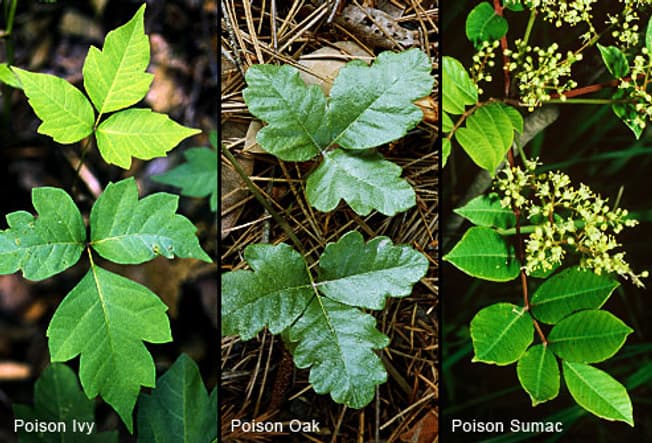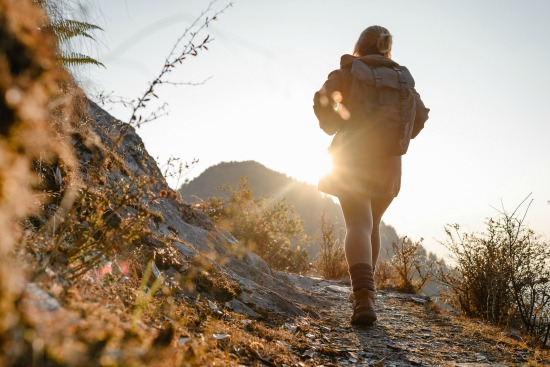Getting out into the great outdoors is a great way to get the family moving, and get some fresh air, and sunlight, but it’s important to keep a few safety tips in mind and have essential gear on hand. If something happens to go wrong, you want to make sure you have every opportunity to come out as unscathed as possible.
Before talking about gear, you should consider the following safety concern before heading out for a long trek in the wilderness. These tips are from the California Department of Parks and Recreation:
- Communications: Cell connectivity in many state park units is limited or non-existent. Be sure you tell a responsible person back at your camp or at home where you are going and when you plan on returning. Ask that person to notify first responders if you do not return on time. Tip: Keeping your phone on airplane mode + low power mode will conserve the battery, allowing it to last several days or even more than a week depending on usage. As well, download any maps or books before hiking out and save your photo editing for when you return back home to stretch out your phone’s battery life.
- Do NOT hike alone: Hike with a friend or a family member. The companionship in the great outdoors is fun and you can encourage one another to meet your fitness goals. You can also help each other if one of you gets injured or lost. If you do choose to do a solo hike, make sure you let someone know where you are and when you will be back.
- Don’t walk off-trail: Do not walk off-trail or enter closed areas. Walking off-trail increases your chance of suffering an injury or getting lost. It also makes it more difficult for a search and rescue team to find you if you do get lost.
- Stay hydrated: Take plenty of drinking water with you. Drink and carry plenty of water (a minimum of 1 quart every two hours). Leave stream, river, and lake water for the park wildlife. Although it looks clean and refreshing, mountain stream water can make you ill.
- Wear proper footwear: Wear sturdy, comfortable shoes to help prevent injury. That said, also bring an extra pair of socks. One hiking enthusiast recommends switching out your old, wet socks for a fresh, dry pair halfway through your hike to keep your feet happy, blister-free, and on the move!
- Know the area’s wildlife: Do not approach or attempt to move sick or injured wildlife. Please report any encounters with aggressive, sick, or injured animals to a park ranger if at all possible. Although rare, black bears, mountain lions, and rattlesnakes may be seen. If you encounter wildlife on the trail, keep your distance, back away slowly, and do not run. Report your sightings to a park ranger if you can. Always know where you are stepping. For example, if you must traverse a log that has fallen across the trail, rather than just stepping over the log, first step up onto the log and then step down once you know the coast is clear. Be cautious when climbing rocks or picking up firewood. If you see a snake, maintain a distance of at least 6 feet. Most bites occur when people get too close or try to touch them.
- Try to avoid ticks: Walk in the middle of trails and use insect repellent. Tuck your pants into your socks. After taking off your gear, check for ticks. Always do a “tick-check” with the help of a friend if necessary.
- Beware of poison oak and poison ivy: This is a common plant throughout much of California and causes pain and blistering of the skin if you contact it. Learn to identify its shiny, three-leaf pattern, and avoid touching it. If you touch poison oak, wash immediately with water and mild soap. Pat dry with a clean towel. Below is an image of the poison oak, poison ivy, and poison sumac. Avoid these plants while outside:

Source: WebMD
Once you know the risks, you can make the right decisions about which gear you may need to bring with you.
- Map and Compass: Because you could be out of the range of cellular services, you should consider carrying a map of the terrain and a compass. You can never be positive that your electronics won’t fail you, get damaged, run out of battery or get dropped. If you get lost, a compass could help you navigate back to your starting place. It is easy to get turned around in the wild. Make sure to get a high-quality compass and learn how to use it.
- Whistle: If you get lost, yelling will take it out of you if you keep it up for too long. Whistles are loud and you can continually blow a whistle for much longer before getting tired, unlike yelling.
- First aid kit: Bring a first aid kit with you! Especially if you are taking precautions and hiking with another person, you can help them or vice versa if someone becomes injured. If you are in an area with poisonous or venomous snakes, consider tossing a snake bite kit in with your first aid kit, and again, know how to use it!
- Water filter: If you run out of water, a small water filter could save your life. Consider something like a LifeStraw Personal Water Filter or a Sawyer Products MINI Water Filtration System. These will filter stream, river, or lake water in an emergency and make it safer for you to drink.
- Fire Starter: Bring a fire starter, and make sure you have practiced with it beforehand. A butane lighter or waterproof matches are the easiest option, just make sure you keep them from getting wet. You should also carry something you can easily ignite such as dry tinder, fire starter, candles, or even compact dryer lint. You can make fire started easy enough by saturating cotton balls with Vaseline and putting them in a Ziploc baggie.
- Sun protection: a hat will help keep the sun off your face so you don’t get a sunburn. It will also help keep you cool. But you should also have sunblock on hand in case you are outside longer than you think you intended.
- Sleeping bag or emergency blanket: Emergency blankets have come a long way in the last several years and you can get lightweight, high-quality blankets to take with you in case you get caught in a storm or overnight. Something like this Mezonn PE emergency sleeping bag could be a great option!
- Food: Make sure you have some snacks with you and take some extra just in case. Bring high-calorie foods that are easy to put in your pack, such as energy bars, trail mix, dried fruit, nuts, jerky, etc.
Being outside is relaxing and stress relieving, but be safe and make sure you go prepared!
This article was originally published at Ready Nutrition™ on May 2nd, 2022








Add a roll of “vet tape” to your kit. 4″ wide 5 yards long. About $2 at farm stores & pet supply stores. You can use it to: improvise an Ace Bandage, hold a large wound dressing in place, make a sling, improvise a splint. It stretches and sticks to itself. No residue on skin or hair.